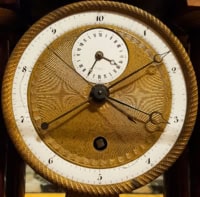
By Matin Durrani
I got an e-mail the other day from a London PR agency telling me about the latest edition of a new journal that’s tapping into the burgeoning interest in using scientific methods to improve and understand the foods we eat. Published by Elsevier, the International Journal of Gastronomy and Food Science seeks to bring chefs and scientists together “by conceiving culinary projects that nurture the relationship between cooking, science and research”.
Intrigued, I had a quick skim of the contents and my eyes were immediately drawn to an article by researchers in Norway, Denmark and Germany, who had examined the factors that affect the quality of a hollandaise sauce – and worked out the best way to make one.
From a scientific perspective, a hollandaise sauce is a colloidal suspension of oil in water. But it’s no ordinary oil-in-water emulsion, as it also contains air bubbles, while the oil phase itself is a complicated mixture of butter, fat and egg-yolk lipids, and the continuous water phase can have vinegar and even wine too.
The emulsion is created by mechanical mixing, which breaks the oil phase down into oil drops, the size of which depend on various factors, including the amount of air and fat. How big or large the drops are ultimately affects how smooth or runny the sauce will turn out.
Yes, yes, I hear you say, so how do you make the perfect hollandaise sauce? Well, the authors tried five different methods, concluding that a technique called “Sabayon WB” is the best of those they tried. (Before you ask, WB is warm butter, as opposed to CB, cold butter.)
According to table 2 in the paper, this is how you make the prefect sauce – preparation time is eight minutes.
1. Put 130 g of egg yolks in a bowl and whisk with a “balloon whisk” at speed 4.
2. Warm the yolks to a temperature of 66–67 °C.
3. Reduce the whisk speed to 2 and then add 580 g of warm butter at 65 °C.
4. Add 20 g of lemon juice and 6 g of salt to the sauce and stir.
5. Pass the sauce through a sieve to a new bowl. Add 120 g of white-wine reduction.
Actually, I can’t quite work out from the paper when you add the wine reduction, but I assume it goes in at the end. Anyway, after testing the sauces with confocal laser scanning microscopy, the researchers put Sabayon WB first because it is the most “airy”, with the foam structure “more or less conserved in the butter sauce”.
The stability of the foam, they say, is “probably caused by the coagulation of egg-yolk proteins, which stabilizes the air bubbles”. The sauces were also rated by a special panel, which judged the sauces on the basis of their odour, appearance, flavour and texture, including “smoothness”, “creaminess”, “meltability”, “fattiness” and “mouth-coating”.
Apparently, no-one quite knows when or where hollandaise sauces originated, but the authors conclude that tastes have changed over the years, with modern chefs now preferring “airy” sauces and even replacing butter with plant oils, which have no unsaturated fat, because they are healthier. (Boring.)
It also seems that “mayonnaise” is a sub-set of hollandaise sauces, but it didn’t come out top in the scientific test that the authors carried out. Better stick with the Hellmanns* then.
*Other brands are available



